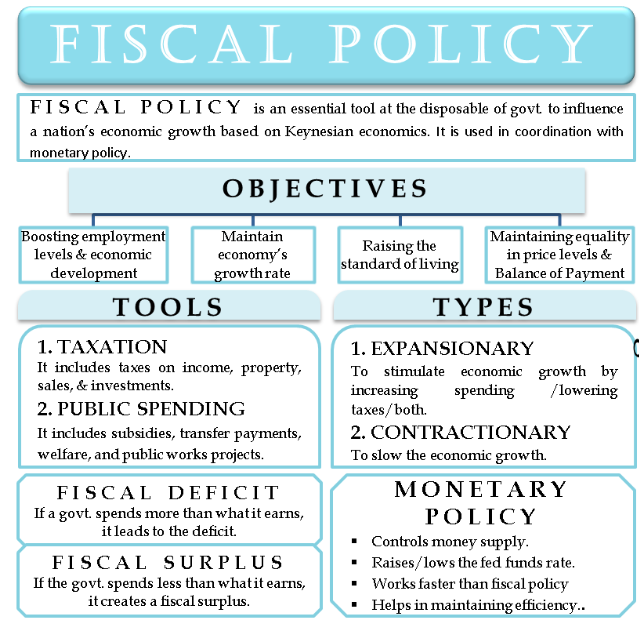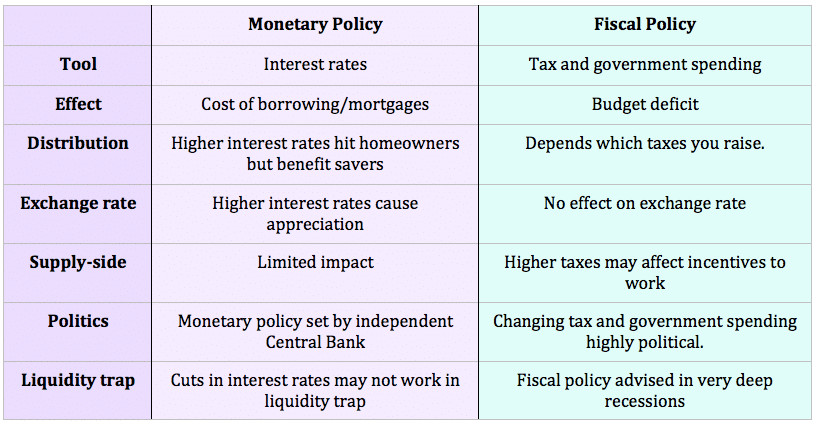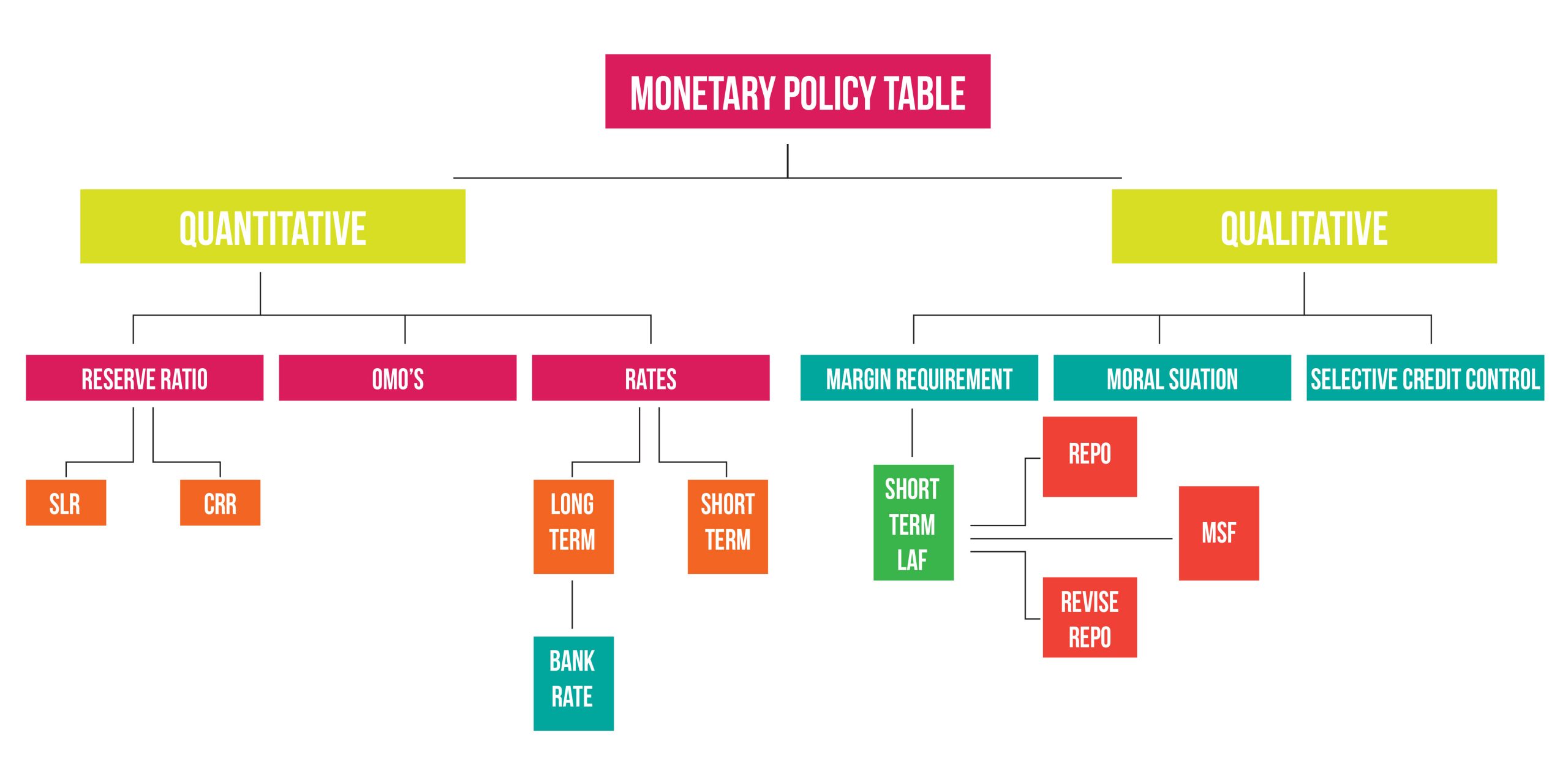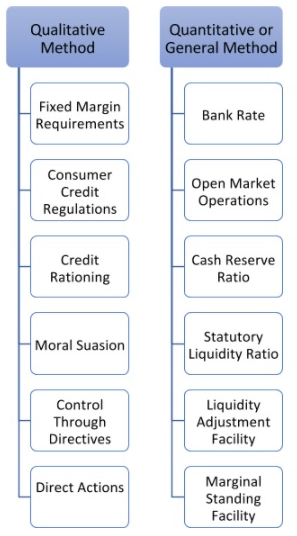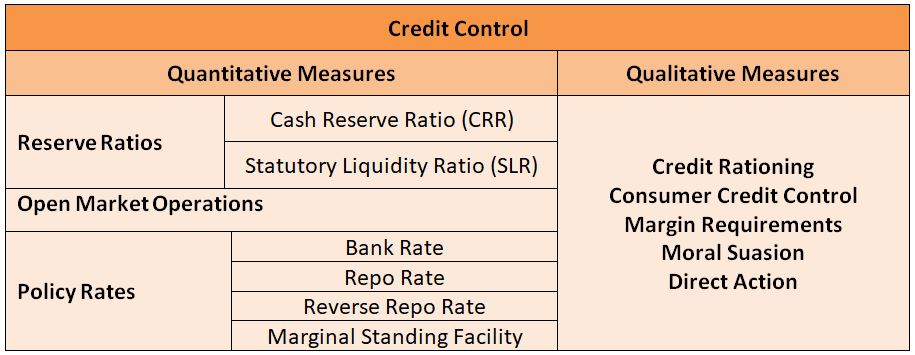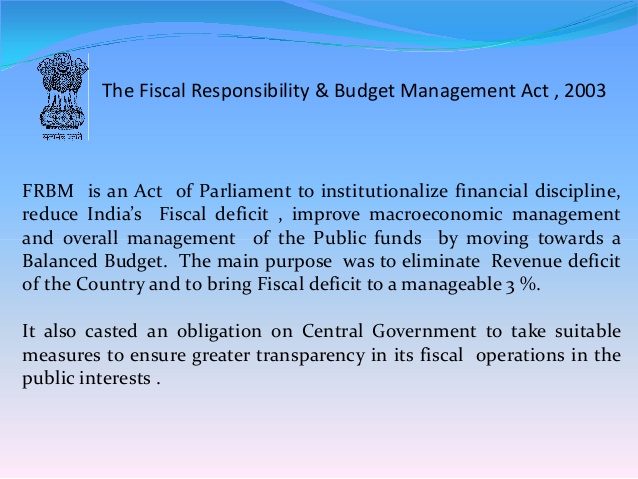The Dec 29th Static Quiz on Economy (Fiscal and Monetary Policy)
Quiz-summary
0 of 10 questions completed
Questions:
- 1
- 2
- 3
- 4
- 5
- 6
- 7
- 8
- 9
- 10
Information
The Dec 29th Static Quiz on Economy (Fiscal and Monetary Policy)
You have already completed the quiz before. Hence you can not start it again.
Quiz is loading...
You must sign in or sign up to start the quiz.
You have to finish following quiz, to start this quiz:
Results
0 of 10 questions answered correctly
Your time:
Time has elapsed
You have reached 0 of 0 points, (0)
Categories
- Not categorized 0%
- 1
- 2
- 3
- 4
- 5
- 6
- 7
- 8
- 9
- 10
- Answered
- Review
- Question 1 of 10
1. Question
Which of the folloing statements regarding Monetary Policy Committee are correct?
1. The Monetary Policy Committee (MPC) is a committee constituted by the Reserve Bank of India and led by the Governor of RBI.
2. Monetary Policy Committee was formed with the mission of fixing the benchmark policy interest rate (repo rate) to restrain inflation within the particular target level.CorrectAns;- c) Both 1 and 2
Explanation;-
• Both the statements are correct regarding Monetary Policy Committee
About Monetary Policy Committee
• The Monetary Policy Committee (MPC) is a committee constituted by the Reserve Bank of India and led by the Governor of RBI.
• Monetary Policy Committee was formed with the mission of fixing the benchmark policy interest rate (repo rate) to restrain inflation within the particular target level.
• Monetary Policy was implemented with an initiative to provide reasonable price stability, high employment, and a faster economic growth rate.
• The major four objectives of the Monetary Policy are mentioned below:
1. To stabilize the business cycle.
2. To provide reasonable price stability.
3. To provide faster economic growth.
4. Exchange Rate Stability.
• Monetary Policy Committee (MPC) was constituted as per Section 45ZB under the RBI Act of 1934 by the Central Government.
• The committee comprises six members – three officials of the Reserve Bank of India and three external members nominated by the Government of India.
• The current mandate of the committee is to maintain 4% annual inflation until 31 March 2021 with an upper tolerance of 6% and a lower tolerance of 2%.
• Decisions are taken by majority with the Governor having the casting vote in case of a tie.IncorrectAns;- c) Both 1 and 2
Explanation;-
• Both the statements are correct regarding Monetary Policy Committee
About Monetary Policy Committee
• The Monetary Policy Committee (MPC) is a committee constituted by the Reserve Bank of India and led by the Governor of RBI.
• Monetary Policy Committee was formed with the mission of fixing the benchmark policy interest rate (repo rate) to restrain inflation within the particular target level.
• Monetary Policy was implemented with an initiative to provide reasonable price stability, high employment, and a faster economic growth rate.
• The major four objectives of the Monetary Policy are mentioned below:
1. To stabilize the business cycle.
2. To provide reasonable price stability.
3. To provide faster economic growth.
4. Exchange Rate Stability.
• Monetary Policy Committee (MPC) was constituted as per Section 45ZB under the RBI Act of 1934 by the Central Government.
• The committee comprises six members – three officials of the Reserve Bank of India and three external members nominated by the Government of India.
• The current mandate of the committee is to maintain 4% annual inflation until 31 March 2021 with an upper tolerance of 6% and a lower tolerance of 2%.
• Decisions are taken by majority with the Governor having the casting vote in case of a tie. - Question 2 of 10
2. Question
Which of the following are correctly matched?
1. Repo Rate = is when the RBI borrows money from banks when there is excess liquidity in the market.
2. Reverse Repo Rate = is the rate at which the central bank of a country (Reserve Bank of India in case of India) lends money to commercial banks in the event of any shortfall of funds.CorrectExplanation;-
• Both the statements are reversed.
• Reverse Repo Rate is a mechanism to absorb the liquidity in the market, thus restricting the borrowing power of investors. Reverse Repo Rate is when the RBI borrows money from banks when there is excess liquidity in the market. The banks benefit out of it by receiving interest for their holdings with the central bank.

• Repo rate is the rate at which the central bank of a country (Reserve Bank of India in case of India) lends money to commercial banks in the event of any shortfall of funds. Repo rate is used by monetary authorities to control inflation.
IncorrectExplanation;-
• Both the statements are reversed.
• Reverse Repo Rate is a mechanism to absorb the liquidity in the market, thus restricting the borrowing power of investors. Reverse Repo Rate is when the RBI borrows money from banks when there is excess liquidity in the market. The banks benefit out of it by receiving interest for their holdings with the central bank.

• Repo rate is the rate at which the central bank of a country (Reserve Bank of India in case of India) lends money to commercial banks in the event of any shortfall of funds. Repo rate is used by monetary authorities to control inflation.
- Question 3 of 10
3. Question
Which of the following are correct regarding Fiscal Policy of Government?
1. Fiscal Policy deals with the revenue and expenditure policy of the Govt
2. Fiscal policy is the means by which a government adjusts its spending levels and tax rates to monitor and influence a nation’s economy.CorrectAns;- c) Both 1 and 2
Explanation;-
• Both the statements are correct
• Fiscal policy is the means by which a government adjusts its spending levels and tax rates to monitor and influence a nation’s economy. It is the sister strategy to monetary policy through which a central bank influences a nation’s money supply.
• Fiscal Policy deals with the revenue and expenditure policy of the Govt.
• The word fiscal has been derived from the word ‘fisk’ which means public treasury or Govt funds.
• Tools of fiscal policy:-
a. Taxation
b. Public expenditure
c. Public debt
d. Plan and Non-Plan Expenditure
• Public Debt means debt on the Govt -It is accumulated borrowing of the Govt Incorrect
IncorrectAns;- c) Both 1 and 2
Explanation;-
• Both the statements are correct
• Fiscal policy is the means by which a government adjusts its spending levels and tax rates to monitor and influence a nation’s economy. It is the sister strategy to monetary policy through which a central bank influences a nation’s money supply.
• Fiscal Policy deals with the revenue and expenditure policy of the Govt.
• The word fiscal has been derived from the word ‘fisk’ which means public treasury or Govt funds.
• Tools of fiscal policy:-
a. Taxation
b. Public expenditure
c. Public debt
d. Plan and Non-Plan Expenditure
• Public Debt means debt on the Govt -It is accumulated borrowing of the Govt
- Question 4 of 10
4. Question
Which of the following difference between Monetary and Fiscal Policy?
1. The tools of Monetary policy is taxation and fiscal policy is Interest rates
2. The monetary policy is having effect on budget deficit and fiscal policy on cost of borrowingsCorrectAns;- d) None of the above
Explanation;-
• Both the statements are incorrect and reversed the monetary and fiscal tools.
• In economics and political science, fiscal policy is the use of government revenue collection and expenditure to influence a country’s economy.
• Monetary policy the policy adopted by the monetary authority of a nation to control either the interest rate payable for very short-term borrowing (borrowing by banks from each other to meet their short-term needs) or the money supply, often as an attempt to reduce inflation or the interest rate to ensure price stability and general trust of the value and stability of the nation’s currency. Incorrect
IncorrectAns;- d) None of the above
Explanation;-
• Both the statements are incorrect and reversed the monetary and fiscal tools.
• In economics and political science, fiscal policy is the use of government revenue collection and expenditure to influence a country’s economy.
• Monetary policy the policy adopted by the monetary authority of a nation to control either the interest rate payable for very short-term borrowing (borrowing by banks from each other to meet their short-term needs) or the money supply, often as an attempt to reduce inflation or the interest rate to ensure price stability and general trust of the value and stability of the nation’s currency.
- Question 5 of 10
5. Question
Which of the following statements are correct regarding tool of Monetary Policy?
1. Quantitative tool= are not directed towards the quality of credit or the use of the credit.
2. Qualitative tool = are related to the Quantity or Volume of the moneyCorrectAns;- d) None of the above
Explanation;-
• Both the statements are incorrect because both the statement are reversed.
• The Quantitative Instruments are also known as the General Tools of monetary policy. These tools are related to the Quantity or Volume of the money. The Quantitative Tools of credit control are also called as General Tools for credit control.
• The Qualitative Instruments are also known as the Selective Tools of monetary policy. These tools are not directed towards the quality of credit or the use of the credit. They are used for discriminating between different uses of credit. Incorrect
IncorrectAns;- d) None of the above
Explanation;-
• Both the statements are incorrect because both the statement are reversed.
• The Quantitative Instruments are also known as the General Tools of monetary policy. These tools are related to the Quantity or Volume of the money. The Quantitative Tools of credit control are also called as General Tools for credit control.
• The Qualitative Instruments are also known as the Selective Tools of monetary policy. These tools are not directed towards the quality of credit or the use of the credit. They are used for discriminating between different uses of credit.
- Question 6 of 10
6. Question
Which of the following Qualitative tool of Monetary Policy?
1. Reserve Ratio
2. Selective Credit Control
3. OMO’sCorrectAns;- b) Only 2
Explanation;-
• Except 2 , the 1 and 3 are Quantitative tools of Monetary Policy.
• Cash reserve ratio is a certain percentage of bank deposits which banks are required to keep with RBI in the form of reserves or balances. The higher the CRR with the RBI, the lower will be the liquidity in the system, and vice versa.
• Selective credit control refers to qualitative method of credit control by the central bank. The method aims, unlike general or quantitative methods, at the regulation of credit taken for specific purposes or branches of economic activity.
• OMOs are the market operations conducted by the RBI by way of sale/ purchase of G-Secs to/ from the market, with an objective to adjust the rupee liquidity conditions in the market on a durable basis. Incorrect
IncorrectAns;- b) Only 2
Explanation;-
• Except 2 , the 1 and 3 are Quantitative tools of Monetary Policy.
• Cash reserve ratio is a certain percentage of bank deposits which banks are required to keep with RBI in the form of reserves or balances. The higher the CRR with the RBI, the lower will be the liquidity in the system, and vice versa.
• Selective credit control refers to qualitative method of credit control by the central bank. The method aims, unlike general or quantitative methods, at the regulation of credit taken for specific purposes or branches of economic activity.
• OMOs are the market operations conducted by the RBI by way of sale/ purchase of G-Secs to/ from the market, with an objective to adjust the rupee liquidity conditions in the market on a durable basis.
- Question 7 of 10
7. Question
Which of the following Quantitative tool of Monetary Policy?
1. Marginal Standing Facility
2. Credit Rationing
3. SLRCorrectAns;- c) Only 1 and 3
Explanation;-
• Except 2 it is Qualitative tool, all are quantitative tool of RBI for monetary polciy
• Marginal standing facility (MSF) is a window for banks to borrow from the Reserve Bank of India in an emergency when inter-bank liquidity dries up completely. The Marginal standing facility is a scheme launched by RBI while reforming the monetary policy in 2011-12.
• Rationing of credit is a method by which the Central Bank seeks to limit the maximum amount of loans and advances and, also in certain cases, fix ceiling for specific categories of loans and advances.
• Statutory Liquidity Ratio or SLR is a minimum percentage of deposits that a commercial bank has to maintain in the form of liquid cash, gold or other securities. It is basically the reserve requirement that banks are expected to keep before offering credit to customers. Incorrect
IncorrectAns;- c) Only 1 and 3
Explanation;-
• Except 2 it is Qualitative tool, all are quantitative tool of RBI for monetary polciy
• Marginal standing facility (MSF) is a window for banks to borrow from the Reserve Bank of India in an emergency when inter-bank liquidity dries up completely. The Marginal standing facility is a scheme launched by RBI while reforming the monetary policy in 2011-12.
• Rationing of credit is a method by which the Central Bank seeks to limit the maximum amount of loans and advances and, also in certain cases, fix ceiling for specific categories of loans and advances.
• Statutory Liquidity Ratio or SLR is a minimum percentage of deposits that a commercial bank has to maintain in the form of liquid cash, gold or other securities. It is basically the reserve requirement that banks are expected to keep before offering credit to customers.
- Question 8 of 10
8. Question
The Fiscal Responsibility and Budget Management (FRBM) Act aimed for
1. eliminating both revenue deficit and fiscal deficit
2. giving flexibility to RBI for inflation managementWhich of the statements given above is/are correct ?
CorrectAns;- b) Only 2
Explanation;-
• 2nd statement is correct, 1st statement is incorrect.
• The Fiscal Responsibility and Budget Management Act, 2003 is an Act of the Parliament of India to institutionalize financial discipline, reduce India’s fiscal deficit, improve macroeconomic management and the overall management of the public funds by moving towards a balanced budget and strengthen fiscal prudence.
• FRBM Act had the objective of ensuring prudence in fiscal management by eliminating revenue deficit, REDUCING ( and not eliminating ) fiscal deficit, establishing improved debt management and improving transparency in a medium term framework with quantitative targets to be adhered by the state with regard to deficit measures and debt management.
• The act was also expected to give necessary flexibility to Reserve Bank of India(RBI) for managing inflation in India. Incorrect
IncorrectAns;- b) Only 2
Explanation;-
• 2nd statement is correct, 1st statement is incorrect.
• The Fiscal Responsibility and Budget Management Act, 2003 is an Act of the Parliament of India to institutionalize financial discipline, reduce India’s fiscal deficit, improve macroeconomic management and the overall management of the public funds by moving towards a balanced budget and strengthen fiscal prudence.
• FRBM Act had the objective of ensuring prudence in fiscal management by eliminating revenue deficit, REDUCING ( and not eliminating ) fiscal deficit, establishing improved debt management and improving transparency in a medium term framework with quantitative targets to be adhered by the state with regard to deficit measures and debt management.
• The act was also expected to give necessary flexibility to Reserve Bank of India(RBI) for managing inflation in India.
- Question 9 of 10
9. Question
Which of the following statements is/ are correct regarding the Monetary Policy Committee (MPC)? (UPSC Pre 2017)
1. It decides the RBI’s benchmark interest rates.
2. It is a 12−member body including the Governor of RBI and is reconstituted every year.
3. It functions under the chairmanship of the Union Finance Minister.
Select the correct answer using the code given below.CorrectAns;- a) Only 1
Explanation;-
• The Reserve Bank of India Act, 1934 (RBI Act) has been amended by the Finance Act, 2016, to provide for a statutory and institutionalized framework for a Monetary Policy Committee it would be entrusted with the task of fixing the benchmark policy rate (repo rate) required to contain inflation within the specified target level. Hence Statement 1 is correct.
• As per the provisions of the RBI Act, out of the six Members of Monetary Policy Committee, three Members will be from the RBI and the other three Members of MPC will be appointed by the Central Government. Hence statement 2 is not correct.
• The Governor of the Bank ex officio Chairperson of MPC. Hence statement 3 is not correct.IncorrectAns;- a) Only 1
Explanation;-
• The Reserve Bank of India Act, 1934 (RBI Act) has been amended by the Finance Act, 2016, to provide for a statutory and institutionalized framework for a Monetary Policy Committee it would be entrusted with the task of fixing the benchmark policy rate (repo rate) required to contain inflation within the specified target level. Hence Statement 1 is correct.
• As per the provisions of the RBI Act, out of the six Members of Monetary Policy Committee, three Members will be from the RBI and the other three Members of MPC will be appointed by the Central Government. Hence statement 2 is not correct.
• The Governor of the Bank ex officio Chairperson of MPC. Hence statement 3 is not correct. - Question 10 of 10
10. Question
Which one of the following statements appropriately describes the “fiscal stimulus”?(UPSC Pre 2011)
CorrectAns;- b) It is an intense affirmative action of the Government to boost economic activity in the country
Explanation;-
• A fiscal stimulus is one in which the government spends more from its own pocket or slashes tax rates. Stimuli puts more money in the hands of consumers and spending goes up – thereby encouraging demand & growth.
 Incorrect
IncorrectAns;- b) It is an intense affirmative action of the Government to boost economic activity in the country
Explanation;-
• A fiscal stimulus is one in which the government spends more from its own pocket or slashes tax rates. Stimuli puts more money in the hands of consumers and spending goes up – thereby encouraging demand & growth.


